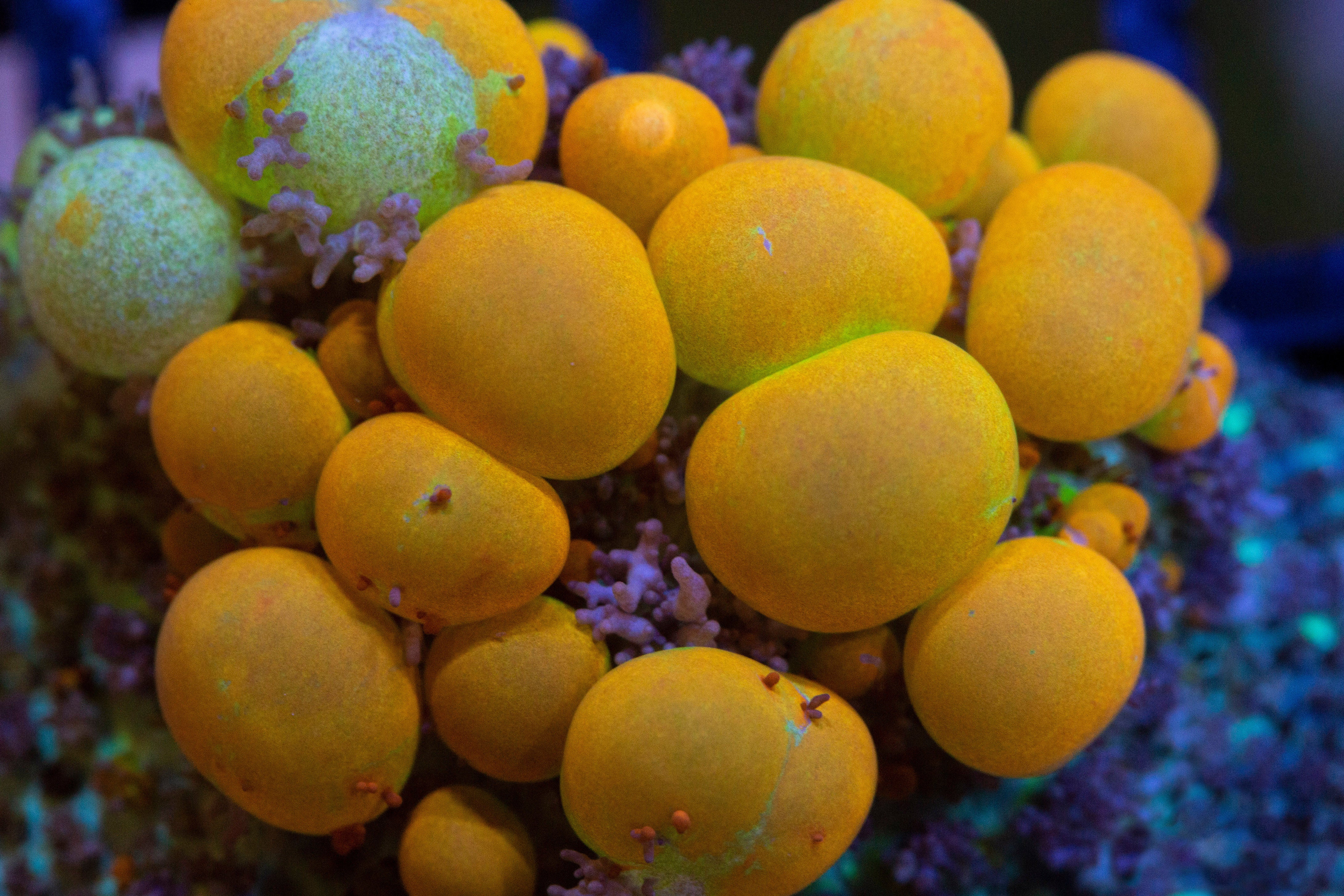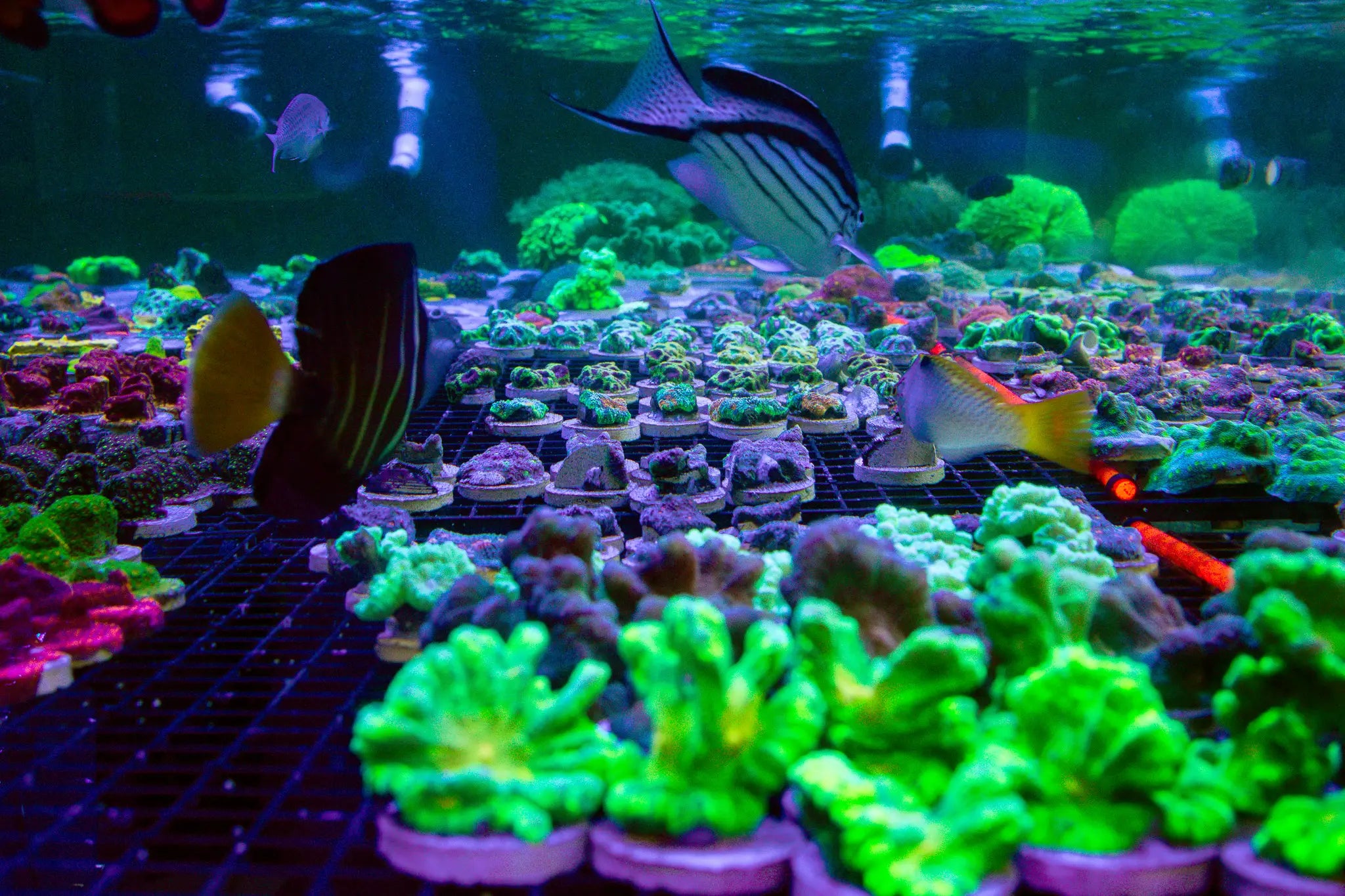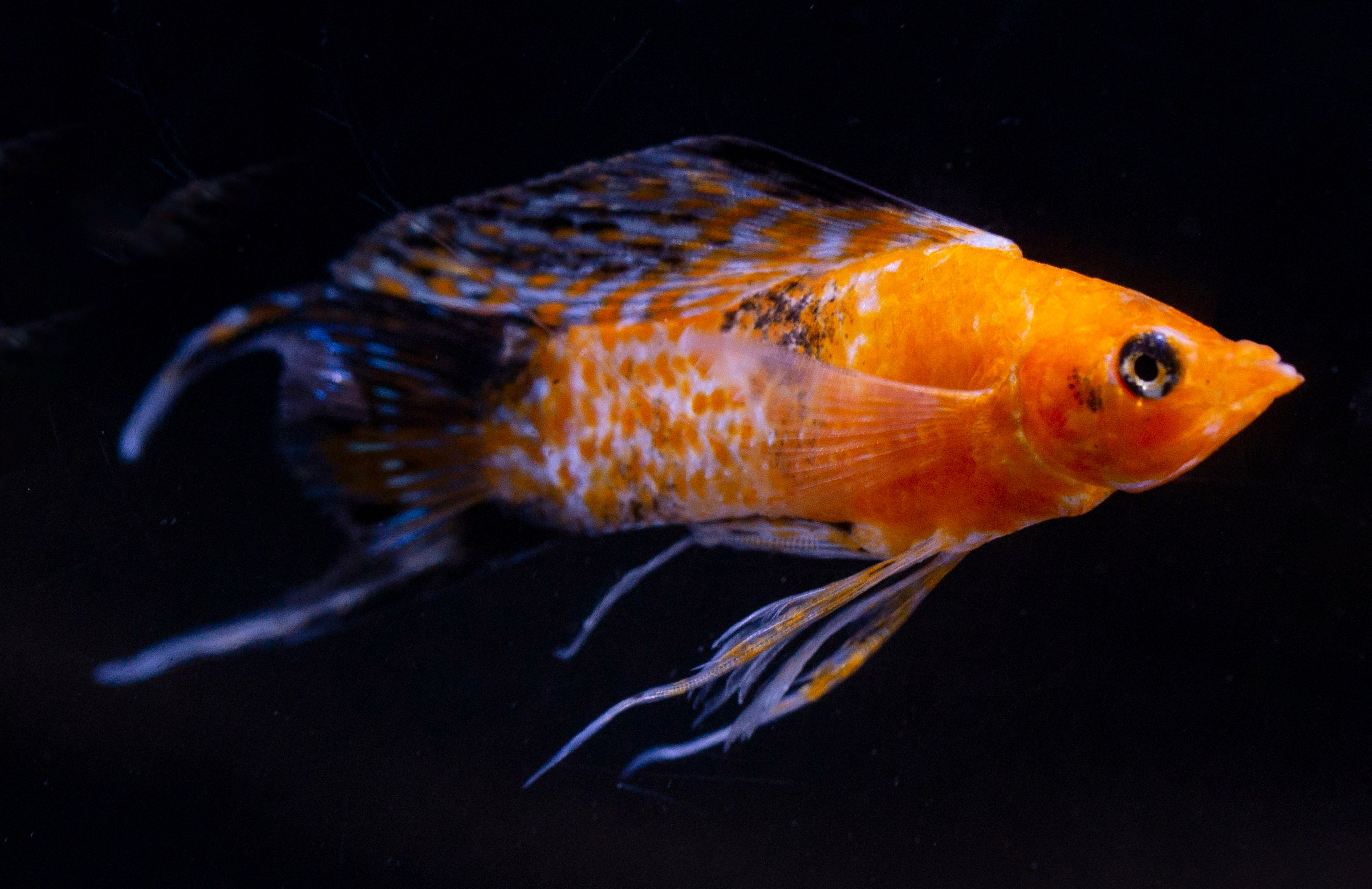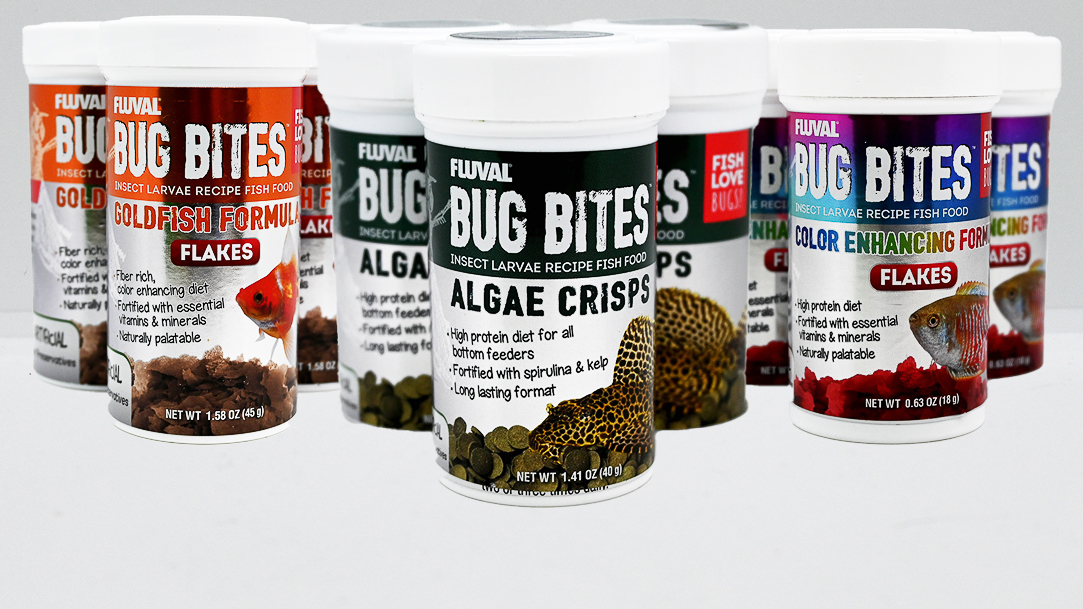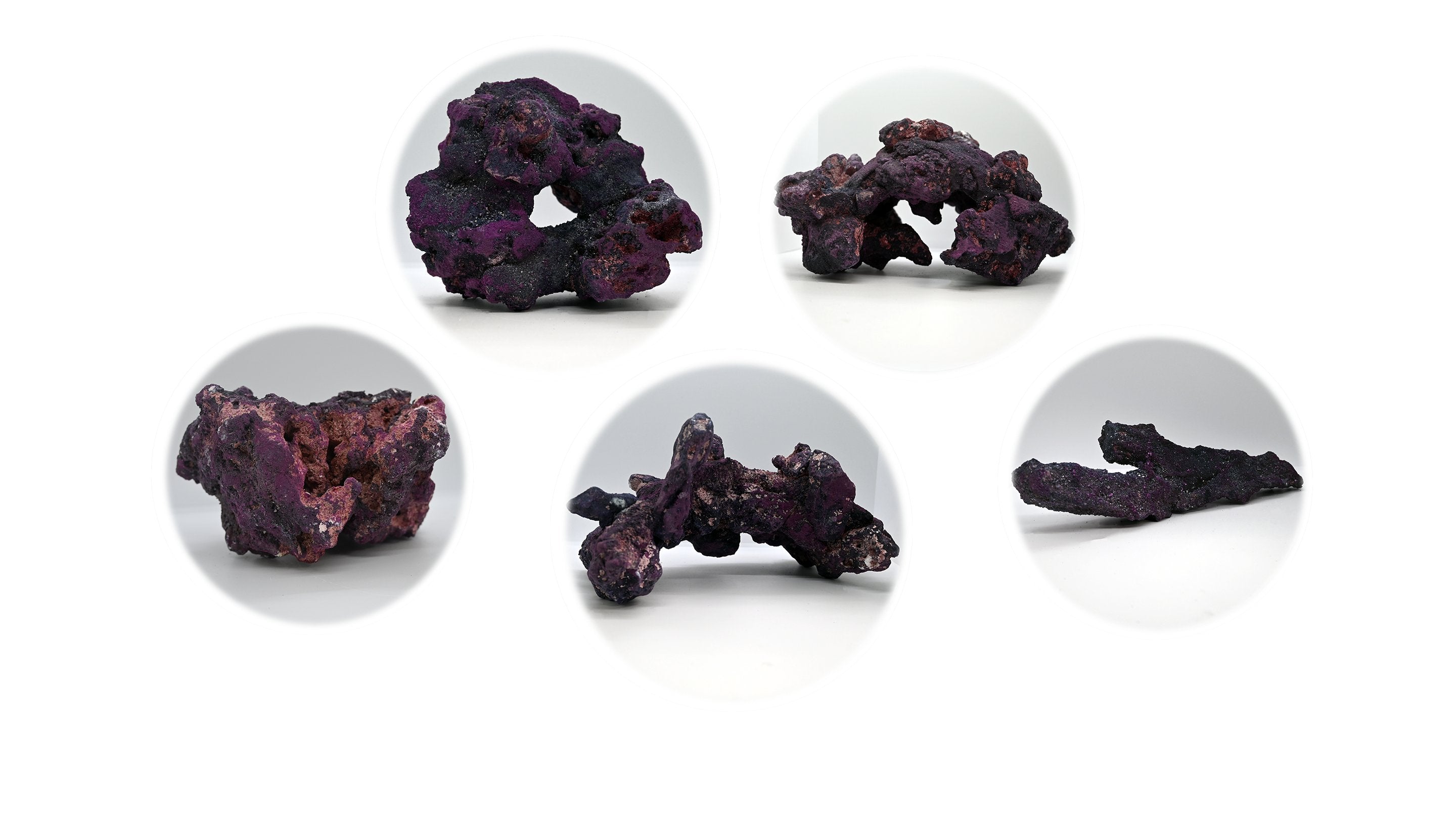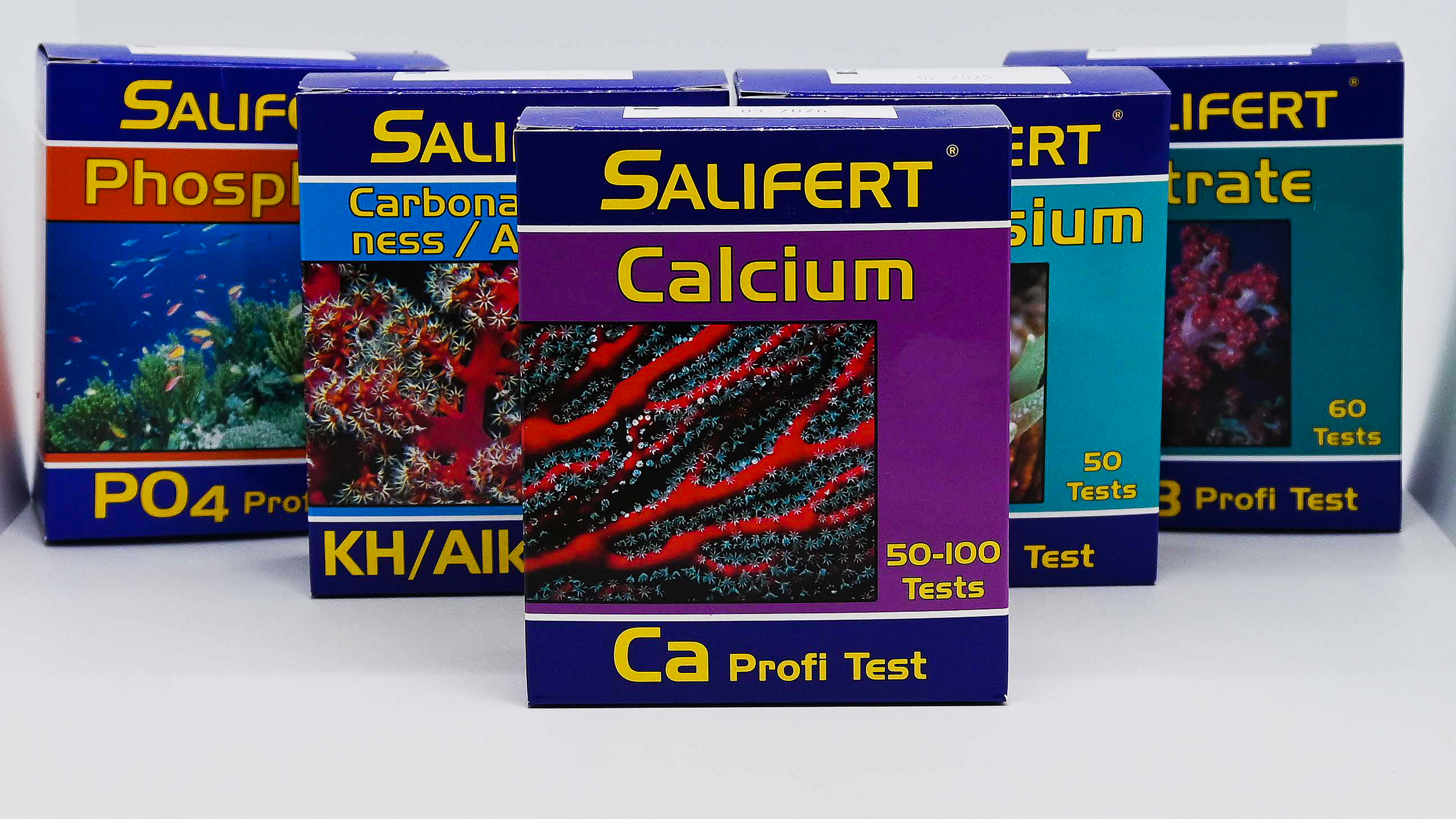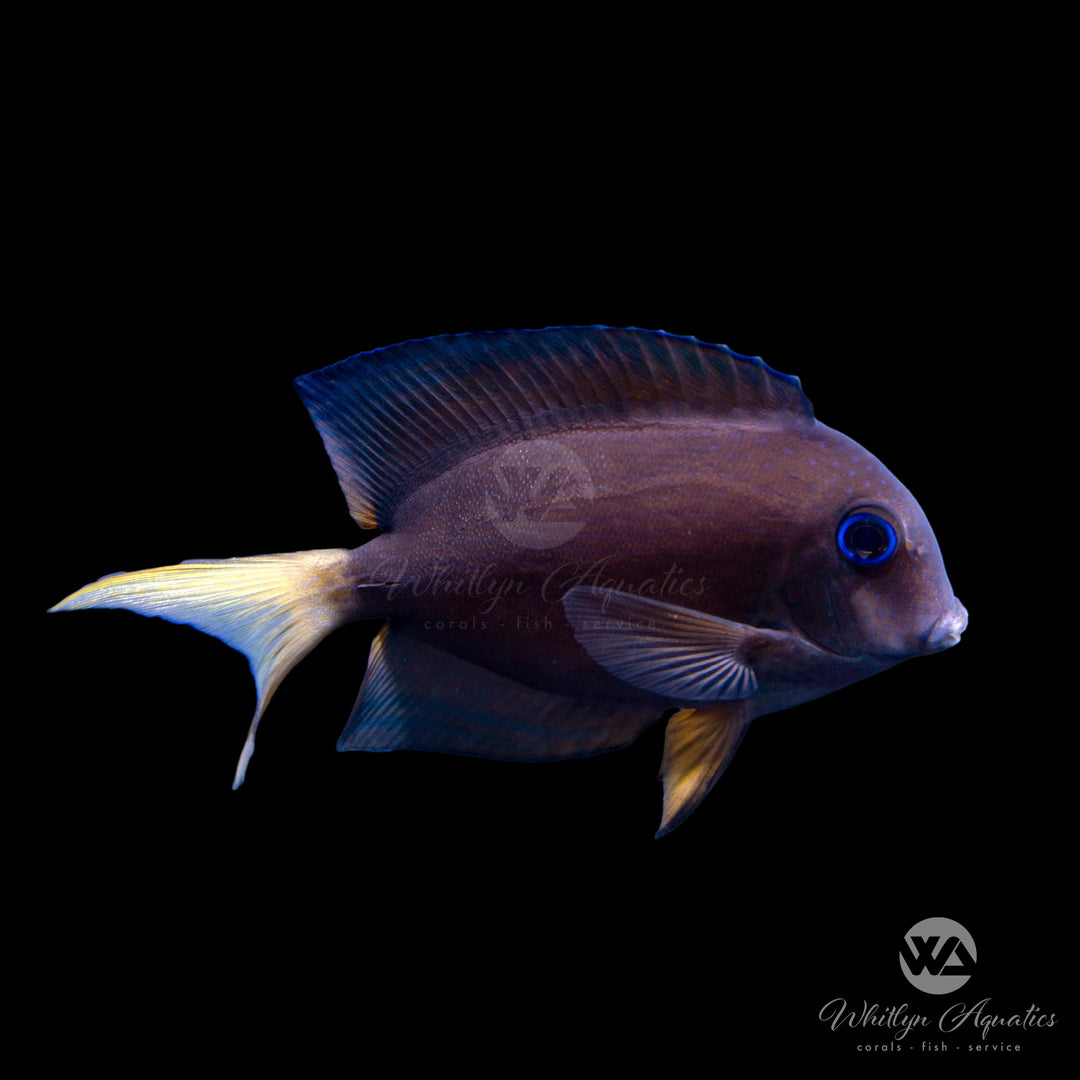
Orange Stripe Bristletooth Tang - Ctenochaetus striatus
- In stock, ready to ship
- Backordered, shipping soon
Orange Stripe Bristletooth Tang (Ctenochaetus striatus)
The Orange Stripe Bristletooth Tang (Ctenochaetus striatus) is a popular marine fish known for its distinctive orange stripes and unique bristle-like teeth, which it uses to graze on algae and detritus. This species is highly valued in reef aquariums for its efficient algae control and active personality.
Description:
• Common Name: Orange Stripe Bristletooth Tang, Striated Surgeonfish
• Scientific Name: Ctenochaetus striatus
• Family: Acanthuridae
• Size: Up to 10 inches (25 cm)
• Color: Brown to olive body with horizontal orange stripes running along the length of its body. The fins are darker, and its tail is sharp, typical of surgeonfish.
Native Region:
The Orange Stripe Bristletooth Tang is native to the Indo-Pacific region, where it inhabits coral reefs and lagoons, feeding primarily on algae and detritus found on rocks and coral.
Aquarium Setup:
• Tank Size: Minimum of 120 gallons (450 liters) due to its active swimming behavior and need for space.
• Water Parameters:
• Temperature: 72-78°F (22-26°C)
• pH: 8.1-8.4
• Salinity: 1.023-1.025 specific gravity
• Substrate: Fine sand or crushed coral with abundant live rock for grazing and hiding spots.
• Diet: Primarily herbivorous; it grazes on algae, detritus, and small organisms. Feed a varied diet including seaweed (nori), spirulina, algae-based foods, and occasional vegetable matter like blanched zucchini.
Care Level:
• Difficulty: Moderate
• Temperament: Generally peaceful but may become territorial toward other tangs or fish with similar shapes, especially in smaller tanks. It is a great tank mate for other peaceful community fish in larger reef setups.
• Lifespan: 10+ years with proper care
Algae Grazing:
One of the key benefits of keeping the Orange Stripe Bristletooth Tang is its effective algae-grazing behavior. Its specialized bristle-like teeth are perfect for scraping algae and detritus from rocks and tank surfaces, helping to keep the aquarium clean.
Additional Tips:
• Tank Mates: Ideal for peaceful community tanks with other non-aggressive fish. It can become territorial toward other tangs, particularly other bristletooth tangs, but it generally does well with different species in larger tanks.
• Behavior: This tang is an active swimmer and spends much of its time grazing on algae. It may be shy at first but becomes more confident once acclimated to its environment. Its peaceful nature makes it a great addition to reef aquariums.
• Water Quality: Requires stable and pristine water conditions. Regular water changes and proper filtration are essential to maintain its health and vibrant coloration.





